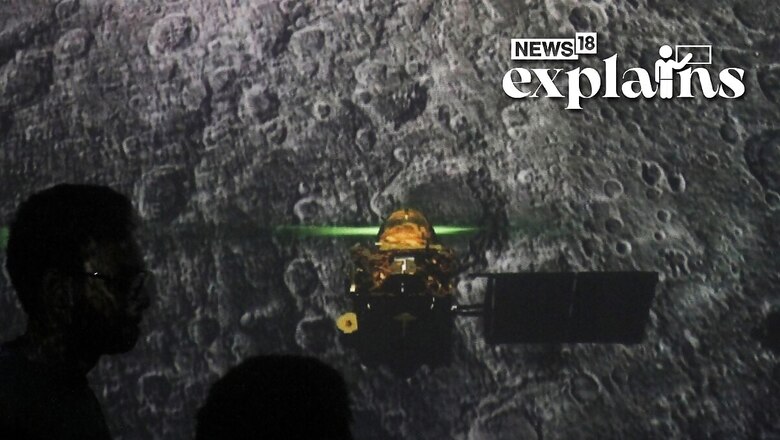
views
India’s endeavor, Chandrayaan-3, aimed at successfully landing on the Moon’s surface, is scheduled to be launched between July 12 and 19, provided that all tests proceed without issues, according to S Somanath, the Chairman of the Indian Space Research Organisation (ISRO), reports said.
Somanath made these remarks during a press conference held after inaugurating a one-day workshop and space exhibition at Kothavara St Xavier’s College, which was organized by ISRO. He further mentioned that the Chandrayaan spacecraft has already been transported to the launch pad located at the Satish Dhawan Space Centre in Sriharikota.
Let’s take a look at the mission amid the developments:
What is Chandrayaan-3?
The Chandrayaan-3 spacecraft is the third lunar exploration mission planned by ISRO. It serves as a continuation of the Chandrayaan-2 mission and aims to showcase the complete capability of safe landing and roving on the lunar surface.
The need for Chandrayaan-3 arose after the unsuccessful landing of the Vikram lander during Chandrayaan-2. This new mission is designed to demonstrate the essential landing skills required for the proposed lunar polar exploration mission in 2024, which India intends to carry out in collaboration with Japan.
Chandrayaan-3 comprises a Lander and Rover configuration and will be launched by the LVM3 (Launch Vehicle Mark 3) from the Satish Dhawan Space Centre (SDSC) SHAR in Sriharikota. The propulsion module will transport the Lander and Rover configuration to a lunar orbit of approximately 100 km, as per a report by India.com.
The propulsion module is equipped with the Spectro-polarimetry of Habitable Planet Earth (SHAPE) payload, which is designed to conduct spectral and polarimetric measurements of Earth from the lunar orbit. This payload will provide valuable data and insights into the Earth’s characteristics and habitability from a unique vantage point on the Moon.
Features of Chandrayaan-3 Spacecraft:
Chandrayaan-3 will consist of a rover and lander, without an orbiter like Chandrayaan-2. The mission aims to explore the Moon’s surface, particularly areas that have been deprived of sunlight for billions of years.
Scientists and astronomers suspect the presence of ice and valuable mineral resources in these dark regions. The exploration will not be limited to the surface but will also focus on studying the sub-surface and exosphere, as per reports.
The rover will communicate with Earth using an orbiter borrowed from Chandrayaan-2. Surface analysis will be conducted by capturing images from a distance of 100 km above the lunar orbit.
Design of Chandrayaan-3 Spacecraft
The lander of Chandrayaan-3 will be powered by four throttle-able engines and will feature a Laser Doppler Velocimeter (LDV).
Importance of Moon Exploration for Scientists
The Moon provides a nearby testing ground for space technologies and serves as a platform for preparing for future extensive space missions. It offers opportunities to gain a better understanding of extraterrestrial territories and fosters technological advancements.
Moon exploration inspires and motivates future scientists while promoting international collaborations.
It provides insights into the history of the solar system and the early stages of Earth’s formation, according to reports.
Reason for Targeting the Moon’s South Pole with Chandrayaan-3
The southern pole of the Moon has larger shadowed areas compared to the northern pole, making it a prime target for exploration. Scientists believe that these shadowed regions may harbor a permanent water source. The craters present in the southern pole, known as cold traps, are of particular interest as they could contain ancient records of the early planetary system.


















Comments
0 comment